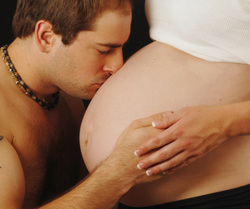Practice Guidelines
Preconception

Preconception care is important as it can reduce complications of pregnancy for the mother and her newborn. Nurses play a key role in educating mothers and families and preconception interventions can improve pregnancy outcomes and the overall health of the family. (Edelman & Mandle, 2010, p. 383)
Reproductive Life Plan (RLP)
The Centers for Disease Control (CDC, as cited in Sanders, 2009, p. 343) defines the RLP as “a set of personal goals about having (or not having) children. It also states how to achieve those goals. Everyone needs to make a reproductive plan based on personal values and resources”.
Preconception Topics
Reproductive Life Plan (RLP)
The Centers for Disease Control (CDC, as cited in Sanders, 2009, p. 343) defines the RLP as “a set of personal goals about having (or not having) children. It also states how to achieve those goals. Everyone needs to make a reproductive plan based on personal values and resources”.
Preconception Topics
- CDC Recommendations
- Genetic History
- Health History
- Assess and Analyze Learning Needs
- Preconception and Adolescents
- Other considerations
CDC Recommendations
- Individual responsibility across the lifespan: encouraged to have a reproductive life plan
- Consumer awareness: increase public awareness of preconception health behaviors and services that are age appropriate.
- Preventive visits: provide primary care, risk assessment and education / health promotion counseling to reduce reproductive risks and improve pregnancy outcomes
- Interventions for identified risks: preconception risk screenings and follow up with those at greatest risk
- Inter-conception care: provide additional intensive interventions to women who have had previous pregnancies with adverse outcomes
- Prepregnancy checkup: provide additional intensive interventions to women who have had previous pregnancies with adverse outcomes
- Health insurance coverage for women with low incomes: increase coverage to improve access to preventive women’s health / preconception / inter-conception care
- Public health programs and strategies: integrate components of preconception health into existing local public health & related programs
- Research: increase the evidence base and promote the use of the evidence to improve preconception health
- Monitoring improvements: maximize public health surveillance and related research mechanisms to monitor preconception health
Genetic History
- Genogram
- Related outside marriage?
- Ethnic background
- Pre-existing medical conditions
- Family medical history (i.e. hypertension)
- Genetic testing / counseling (i.e. family history of cystic fibrosis, hemophilia, PKU, Tay-Sachs disease, thalassemia, sickle cell disease or train, birth defects, mental retardation)
Health History
Assess and Analyze Learning Needs
- Level of education
- Consider decisions and motivations involved with pregnancy
- Knowledge regarding family planning
- Knowledge regarding safe sexual practices
- Knowledge regarding prenatal care and personal hygiene
- Knowledge regarding pregnancy and birthing process
- Knowledge regarding child-rearing
- If choosing to remain childless, knowledge regarding contraception
Preconception and Adolescents
“Nurses who provide care to adolescents have an opportunity to discuss future pregnancies and to use healthcare visits
to teach about preconception health. Teaching adolescents who both express a desire for pregnancy and those who do not express such
a desire is an important part of comprehensive nursing care. Teens require thorough teaching about healthcare risks such as smoking cessation,
body weight control, interpersonal violence, and the need for folic acid. Adolescents should be prime recipients of preconception
education at every healthcare visit”
(Heavey, 2010, p. 213)
to teach about preconception health. Teaching adolescents who both express a desire for pregnancy and those who do not express such
a desire is an important part of comprehensive nursing care. Teens require thorough teaching about healthcare risks such as smoking cessation,
body weight control, interpersonal violence, and the need for folic acid. Adolescents should be prime recipients of preconception
education at every healthcare visit”
(Heavey, 2010, p. 213)
Other considerations
- Overall physical health
- Economic support
- Working parents
- Abuse / neglect
- Multiple closely spaced children
- Low family self-esteem
- Immature parents
- Multicultural considerations / religion
Pregnancy

Collaboration between the nurse and the patient’s health care team and family is extremely important to meet the pregnant woman’s needs.
A nurse’s knowledge, support and caregiving cannot be underestimated especially during labor when the mother needs active emotional and physical support.
(Edelman & Mandle, 2010, p. 387)
Pregnancy Topics
A nurse’s knowledge, support and caregiving cannot be underestimated especially during labor when the mother needs active emotional and physical support.
(Edelman & Mandle, 2010, p. 387)
Pregnancy Topics
- Aspects of Adaptation
- Aspects of Personal Belief System and Lifestyle
- Aspects of Support
- Perinatal Care Guidelines
Postpartum Contraception
Postpartum presents a prime opportunity to discuss and initiate contraception because the patient is accessing health care and may be motivated to prevent a future pregnancy.
Centers for Disease Control and Prevention recommendations for postpartum contraception are as follows:
Other contraceptive methods:
Centers for Disease Control and Prevention recommendations for postpartum contraception are as follows:
- First 21 days postpartum: avoid use of combined hormonal contraceptives due to elevated risk of venous thromboembolism (VTE)
- 21 to 42 days postpartum: if the woman is at high risk for VTE, avoid use of combined hormonal contraception;
High risk would include 35 years or older, previous VTE, thrombophilia, known thrombogenic mutations, immobility, blood transfusion with delivery, body mass index of 30+, postpartum hemorrhage, peripartum cardiomyopathy, post cesarean delivery, preeclampsia, or smoking.
For a woman without risk for VTE, combined hormonal contraception would be safe. - 43+ days postpartum: no restrictions on the use of combined hormonal contraception
Important to note that combined hormonal contraception may impede breast feeding.
Other contraceptive methods:
- Progestin-only contraceptives (progestin only pills, depo injections, implants)
- Intrauterine device (IUD) – risk of expulsion is higher when inserted within 28 days of delivery
- Condoms – can be used anytime
- Diaphragm / cervical cap – should be delayed until 6 weeks postpartum
(Barclay & Vega, 2011)